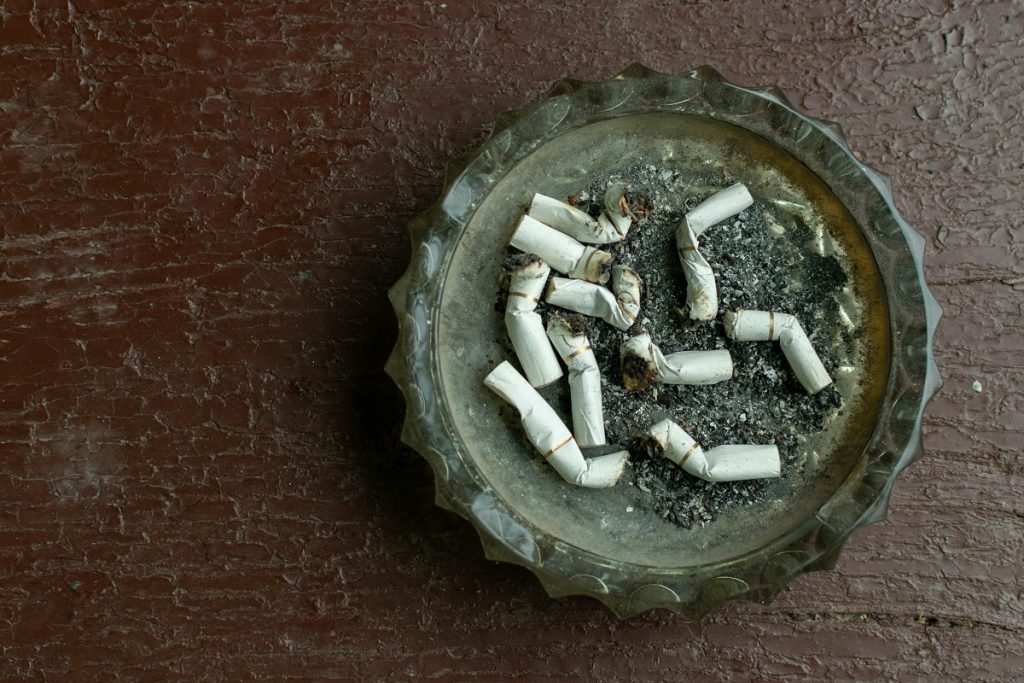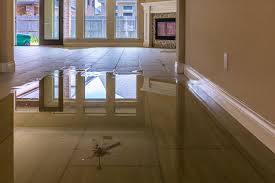Table of Contents
After years of smoking in a home, walls and contents become blemished and develop foul odors, and professional cigarette smoke odor removal is often necessary. Learn more about cleaning homes affected by tobacco residue and odors below.
What is cigarette smoke?
Cigarette smoke residue is a yellowish-brown, gluey substance that sticks to every surface in a home, making it difficult and time-consuming to remove.
When cigarettes, pipes, or cigars are burned, the environmental tobacco smoke (ETS) that results, also known as “secondhand smoke,” is a complex mixture of over 7,000 compounds, more than 40 of which are associated with cancer, according to the Environmental Protection Agency (EPA). Exposure to ETS often referred to as “passive smoking,” affects both smokers and non-smokers.
How does cigarette smoke affect your home?
Smoking affects the people exposed to smoke and produces odorous substances that stick to every surface of the area where smoking has taken place. The yellowish-brown substance is eliminated through smoking bonds to walls, furniture, and plastics and can permanently change their appearance. Cigarette smoke also penetrates more odor-absorbing objects, such as carpets, upholstery, bedding, walls, clothes, electronics, and more.
Additionally, the HVAC system of a building carries the smoke odor and chemicals throughout the structure. The affected surfaces will become unpleasant to look at, and the odors may disturb many people. The result of long-term smoking in enclosed areas is similar to that of a fire. However, tobacco smoke chemicals are much more challenging to eliminate than those of an actual fire.
Ultimately, tobacco residue is tough to remove and requires professional equipment and services. But, if you want to DIY, here are a few cigarette smoke odor removal tips.
DIY Cigarette Smoke Odor Removal from Homes
Long-term cigarette odor removal solutions
To eliminate cigarette smoke odor, you must thoroughly clean the tobacco smoke residue from every surface and corner of the home:
- First, open all windows and doors to let as much fresh air in as possible.
- Clean or replace the air filters, furnace filters, and AC filters.
- Clean walls and ceilings using products with ammonia and glycol — two ingredients that neutralize bad odors. Let the walls dry and check if the odor persists.
- If you can still smell cigarette odor after cleaning, repaint the walls and ceilings with latex paint. Use a sealant designed to lock in odors before painting.
- Clean everything in the home: floors, windows, carpets, furniture, upholstery, draperies, blinds, and other household surfaces, fixtures, and items. Hire a professional cleaning company if the tobacco smoke is too difficult to remove.
Short-term cigarette odor removal solutions
If you want inexpensive short-term solutions, try these tips:
- Use an air purifier in your home.
- Sprinkle baking soda on the carpets, leave it overnight to absorb bad smells, and vacuum it the next day.
- Place saucers of white vinegar around the house and leave them overnight to neutralize the smell.
- Get indoor plants that can absorb up to 87% of indoor pollutants.
- Place small bowls of coffee throughout the home.
- Use scented or non-scented candles.
- Leave orange peels around the home.
- Place pineapple slices around the room with all doors and windows closed for 24 hours.
- Place bowls of activated charcoal around the home.
Completely removing the cigarette smoke odor from the home is time-consuming and complicated. Call a professional smoke remediation specialist like PuroClean to remove the scent if the situation is complex.
How professionals remove smoke odor from a property
As tobacco residue is present throughout the affected area, removing it is often very difficult. No magic formula will whisk away unwanted residues and smells in your home.
Masking cigarette smoke odor with air fresheners might seem like an easy fix, but it only offers a temporary illusion of cleanliness. These products don’t eliminate the odor at its source—instead, they merely layer synthetic fragrances over deeply embedded smoke particles. In reality, air fresheners may contribute to indoor air pollution and pose additional health risks, especially for people with respiratory issues, allergies, or chemical sensitivities.
Many homeowners make the mistake of repainting walls to hide the smell of cigarette smoke, thinking a fresh coat will seal in the odor. Unfortunately, without thoroughly cleaning the affected surfaces first, this method often backfires. Smoke residue—also known as third-hand smoke—seeps into drywall, ceilings, and insulation. Within weeks or months, that residue begins to penetrate the new layer of paint and release offensive odors once again. This cycle frustrates many who believed they had addressed the problem, only to find the smell creeping back.
The Hidden Problem: Soft Materials Absorb Cigarette Smoke Deeply
The challenge of eliminating cigarette smoke doesn’t stop with walls and ceilings. In fact, soft furnishings are often the worst offenders when it comes to holding onto smoke odor. Items such as:
- Upholstered furniture
- Curtains and drapes
- Bedding and mattresses
- Area rugs and carpeting
- Clothing stored in closets or drawers
…are all extremely porous and can absorb large amounts of smoke over time. The microscopic particles from cigarette smoke cling to the fibers in these materials, embedding themselves far below the surface. Regular household cleaning methods, like vacuuming or using fabric sprays, rarely make a noticeable difference. In some cases, these methods can even make the situation worse by pushing contaminants deeper into the fabric.
Why Professional Help Is Often Necessary
Restoring soft materials damaged by cigarette smoke is rarely a DIY-friendly task. Specialized equipment—such as ozone machines, thermal fogging devices, or hydroxyl generators—may be required to break down the molecular structure of smoke odors. Even with this equipment, professional expertise is often necessary to avoid damaging delicate fabrics or inadvertently spreading smoke residue to clean areas of the home.
Because of the high cost and limited success rate of restoring heavily smoke-infused items, many homeowners and property managers choose to replace these materials entirely. While this can be an investment, it’s often the most effective way to fully eliminate cigarette smoke odor and restore indoor air quality.
Final Thoughts: True Cigarette Smoke Odor Removal Goes Beyond Surface Cleaning
Successfully removing cigarette smoke from a home or building requires a deep-cleaning strategy that addresses all affected surfaces—hard and soft alike. It’s not enough to mask the smell or cover it up. True remediation involves identifying how deeply the smoke has penetrated, assessing what can be salvaged, and using professional-grade tools and treatments to neutralize the odor at its source.
Whether you’re dealing with smoke from recent use or years of buildup, comprehensive smoke remediation is essential for restoring a healthy, odor-free living environment. Don’t let lingering cigarette smoke affect your comfort, health, or property value—address it thoroughly and correctly the first time.
For cigarette smoke odor removal, call the pros!
To remove tobacco smoke odors in your home effectively and in the shortest time possible, hire a professional restoration company like PuroClean. We provide complete smoke cleaning and sanitation, professional deodorization, and duct cleaning services.




